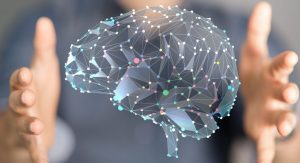
Digital Brain
Technology has shifted how we ‘do work’, how we socialise and communicate with others and how we play.
Within three decades, we’ve gone from sending physical memo’s around the office and faxes to external parties to being hyper-connected to anyone, anywhere, at any time. We’ve gone from arranging dates, times and meet-ups beforehand (from a fixed landline), to arranging on the go. We’ve gone from TV channels, CD’s, outdoor sports and books to streaming, playlists, online multiplayer games and digital/audible books.
So, what do we, as adults and as professionals, need to consider when thinking about technology and human behaviour, and why is it important?

Our brains are neuroplastic. This means that whatever we do, think about, watch, engage in or react to, changes the structure and strength of the connections of the neurons in our brain. In other words: ‘when neurons fire together, they wire together’.
This is why we use the phrase ‘practice makes perfect’. It is why we spend so much time practising the basics of sports and why it is also so difficult to break a habit. The more we do something, the more our brain develops the neural capacity to keep doing it.
In the same way, the more time we spend engaging with digital technology, the more our behaviour and psychology adapts to the technology use – becoming subconsciously habitual and engrained as we repeat the behaviour.
Neuroplasticity is the foundation principle of how our brain forms ideas, concepts, learnings and is key part of memory formation, and linked to that automated behaviour.
Part of the topic of ‘CyberCognition’ is:
- How good you are at multi-tasking
- Your ability to maintain focus and attention
- How resistant you are to technology distractions
If you’d like to read more about how digital technology affects our brain functionality, a great book to pick up is: ‘Cybercognition: Brain, Behaviour and the Digital World’ by Lee Hadlington.
Find out more about the how our brains and cognition are affected by digital technology
You can find out more by clicking on the images below.










